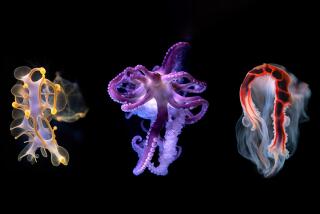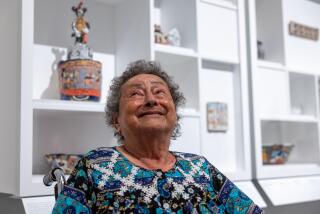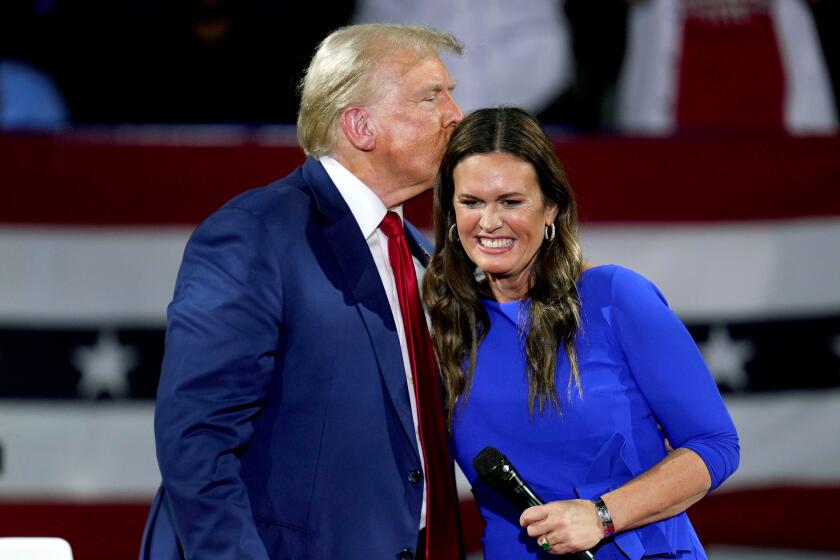American art collectors ripe for study
Henry Clay Frick, J. Pierpont Morgan, Louisine and Henry O. Havemeyer in New York; J. Paul Getty, Norton Simon, Arabella and Henry E. Huntington in Los Angeles; Andrew W. Mellon in Washington, D.C.; Claribel and Etta Cone in Baltimore. Big names in the art world — and merely a sampling of Americans whose art collections have shaped the nation’s museums.
The artistic legacies of American collectors get serious attention in scholarly circles. The back story is another matter. Biographers and journalists may revel in the messy business of how and why rich and powerful Americans spend fortunes on Rembrandts, Monets, Picassos and Rauschenbergs. Art historians tend to concentrate on connoisseurship and aesthetics.
That’s beginning to change. Thanks to expanding views of art history, a fresh crop of scholars intrigued with the socioeconomic context of collecting and the provenance of art objects are giving American collectors a new level of scrutiny and respect.
“The history of collecting is so deliciously interdisciplinary,” says Inge Reist, who directs the fledgling Center for the History of Collecting in America at the Frick Collection in New York. “It opens so many doors.” The center was established in 2007, after years of planning, “to stimulate awareness and study of the formation of fine and decorative arts collections from colonial times to the present, while asserting the relevance of this subject to art and cultural history.”
It’s an idea whose time has finally come, says Jonathan Brown, a professor at New York University’s Institute of Fine Arts who teaches seminars on American collecting and played a leading role in the formation of the Frick’s research center.
“If you turn the clock back to 1880, the United States of America is a small country and the first gigantic fortunes are just in the process of being made,” he says. “There’s a sense on the part of the industrialists that the United States should have a high culture. Thirty to 40 years later, by 1920, they had imported a great deal of Europe’s patrimony.”
America developed an entrepreneurial style of collecting that continues today with power brokers and arts patrons playing enormous roles in the cultural lives of their cities. Billionaire Eli Broad bankrolled a building bearing his name at the Los Angeles County Museum of Art, but dashed hopes that his contemporary collection would go there and is planning to build his own museum at a yet-to-be-designated location in the L.A. area. The late Donald Fisher, who founded Gap Inc. with his wife, Doris, struck a deal that will make his contemporary art holding the centerpiece of a new wing at the San Francisco Museum of Modern Art — after a plan to erect a showcase for the collection at the Presidio was defeated by neighborhood protests.
But until recently, Brown says, “the history of collecting in the United States hadn’t even been defined as a subject, whereas in Europe it was quite advanced. The feats of American collectors were more than equal to what had gone on in the great centers of Europe, but scholars who habitually studied collecting in Spain or France or England never got their minds around the United States as a comparable example.”
“Who buys what is inherently interesting,” he says. “It’s how culture puts its values on display. What distinguishes American collecting is a sense of the public good. The idea that collections would not only enhance the reputations of the collectors, but one way or another they would come into the public domain and provide an uplifting element to the American experience. There are a thousand and one fascinating tales that can be told.”
In Los Angeles alone, there is much to be learned about collectors who donated art to the forerunner of the Los Angeles County Museum of Art, in Exposition Park, and supporters of the Pasadena Art Museum who switched their allegiance to the fledgling Museum of Contemporary Art when Norton Simon took charge of the Pasadena institution.
One signal prototype of American collecting was Frick himself, a man of modest origin who built a great fortune and then left his remarkable collection to the public.
The Pittsburgh coke and steel industrialist began collecting in 1881. At his death, in 1919, he bequeathed his New York City mansion, furnishings and collection of paintings, sculpture and decorative arts to be established as a public art gallery. His daughter, Helen Clay Frick, founded the reference library in 1920.
The art collection and the library’s holding of more than 250,000 books and periodicals, 80,000 auction catalogs and a million photographs — much of it pertaining to American collecting — made the Frick an ideal location for the new research center, Reist says.
In three years of existence, it has set up fellowships for scholars and a biennial $25,000 publication prize, awarded last year to Julia Meech for her book, “ Frank Lloyd Wright and the Art of Japan: The Architect’s Other Passion.” An outreach program includes professional seminars, workshops and internships and public symposiums.
Crowds have turned out for discussions of subjects such as “ Holland’s Golden Age in America: Collecting the Art of Rembrandt, Vermeer and Hals” and “The American Artist as Collector: From the Enlightenment to the Postwar Era.” Six of the seven symposiums held so far were presented in New York; “Power Underestimated: American Women Art Collectors” was in Venice, Italy. Next, in December, is “Marketmakers: Art Collectors, Dealers and Advisors in Nineteenth-Century Europe and America” at the Wallace Collection in London.
The center’s small staff — three people who collectively fill the equivalent of two full-time positions — also has developed research tools, including an online database of American collection archives, bibliographies and oral histories. The goal, Reist says, is to streamline searches and consolidate a wealth of information and archives housed all over the world.
So far, the archives directory encompasses about 5,000 collections in 500 repositories documenting the lives and activities of 1,500 American collectors. Researchers who visit https://research.frick.org/directoryweb/home.php find, for example, that information about New York taxi tycoon Robert C. Scull and his wife, Ethel (known as “Spike”) — who collected contemporary art voraciously in the 1960s and scandalized the art world when they cashed in at auction in 1973 — is available in interviews, papers and record books at the Archives of American Art in Washington and the Museum of Modern Art in New York.
The life and times of Betty Parsons, a New York dealer, collector and artist dubbed by Artnews as “the den mother of Abstract Expressionism,” can be unearthed from the Archives of American Art, the National Portrait Gallery Library and the Hirshhorn Museum and Sculpture Garden Library in Washington and the Getty Research Institute.
The Getty Research Institute, established in 1982, has a much broader reach than the Frick center, but its special collections contain an expanding trove of letters, business records and libraries of American collectors, dealers, artists and critics. The enormous archive of Joseph Duveen, the dealer known for selling the collections of impoverished Europeans to fabulously wealthy Americans, including Frick, Huntington and Mellon, is in great demand, says Marcia Reed, chief curator and head of collection development at the Getty’s research library.
“We have been interested in the history of museums and collections from the get-go,” Reed says. “While we were collecting, we were chronicling the history of art collecting itself.” With funds to buy entire libraries, the Getty has acquired vast holdings of material bearing “the imprimatur of past collectors, connoisseurship and taste,” she says. The trove includes the papers of art critic/curator/collector Douglas Cooper and art historian Julius S. Held and a photo archive and business records of New York dealer French & Co.
The Getty’s Provenance Index, a series of databases on collecting launched in the 1980s, is now under the umbrella of the Research Institute’s Project for the Study of Collecting and Provenance. Under the direction of Christian Huemer, the project organizes research on specific topics and supports scholars in the field by providing access to the far-flung resources of other institutions. Much of the scholarly work concerns collecting in Europe, but since the late 19th century it has become impossible to separate the European art market from that of America, he says.
American collectors are also the subject of exhibitions. That isn’t a new development, but such shows pop up with increasing frequency and sometimes with a new twist.
“Robert and Ethel Scull: Portrait of a Collection,” a recent hit at Acquavella Galleries in New York, seems to have rehabilitated the reputation of a couple once vilified as vulgar, nouveau riche social climbers. “Picasso at the Metropolitan Museum of Art,” at the Met through Aug. 27, sounds like a routine permanent collection show, but the catalog details the ownership history of about 100 objects, mostly donated by Americans who favored the artist’s early work.
In Southern California, the Los Angeles County Museum of Art presented a major exhibition of William Randolph Hearst’s collection in 2008-09, and a show of New York architect Peter Marino’s collection of bronzes, at the Wallace Collection through July 25, is coming to the Huntington Library, Art Collections and Botanical Gardens in October. Despite his highly refined taste in buildings and sculptures, Marino is said to dress exclusively in black leather, accessorized by dark glasses, high boots and wristbands.
The Journal of the History of Collections, a scholarly publication of Oxford University Press, also appears to have a growing interest in who has bought what in America. Last November’s special edition on “The Art Collector — Between Philanthropy and Self-Glorification,” includes articles on Frick and Isabella Stewart Gardner, who established a museum in Boston. The May issue offers “Medieval Art for America: The Arrival of the J. Pierpont Morgan Collection at the Metropolitan Museum of Art” and “Golden Age Collecting in America’s Middle West.”
As Reist puts it, “There was a moment when collecting was regarded as something almost frivolous and it isn’t anymore.”
More to Read
The biggest entertainment stories
Get our big stories about Hollywood, film, television, music, arts, culture and more right in your inbox as soon as they publish.
You may occasionally receive promotional content from the Los Angeles Times.










